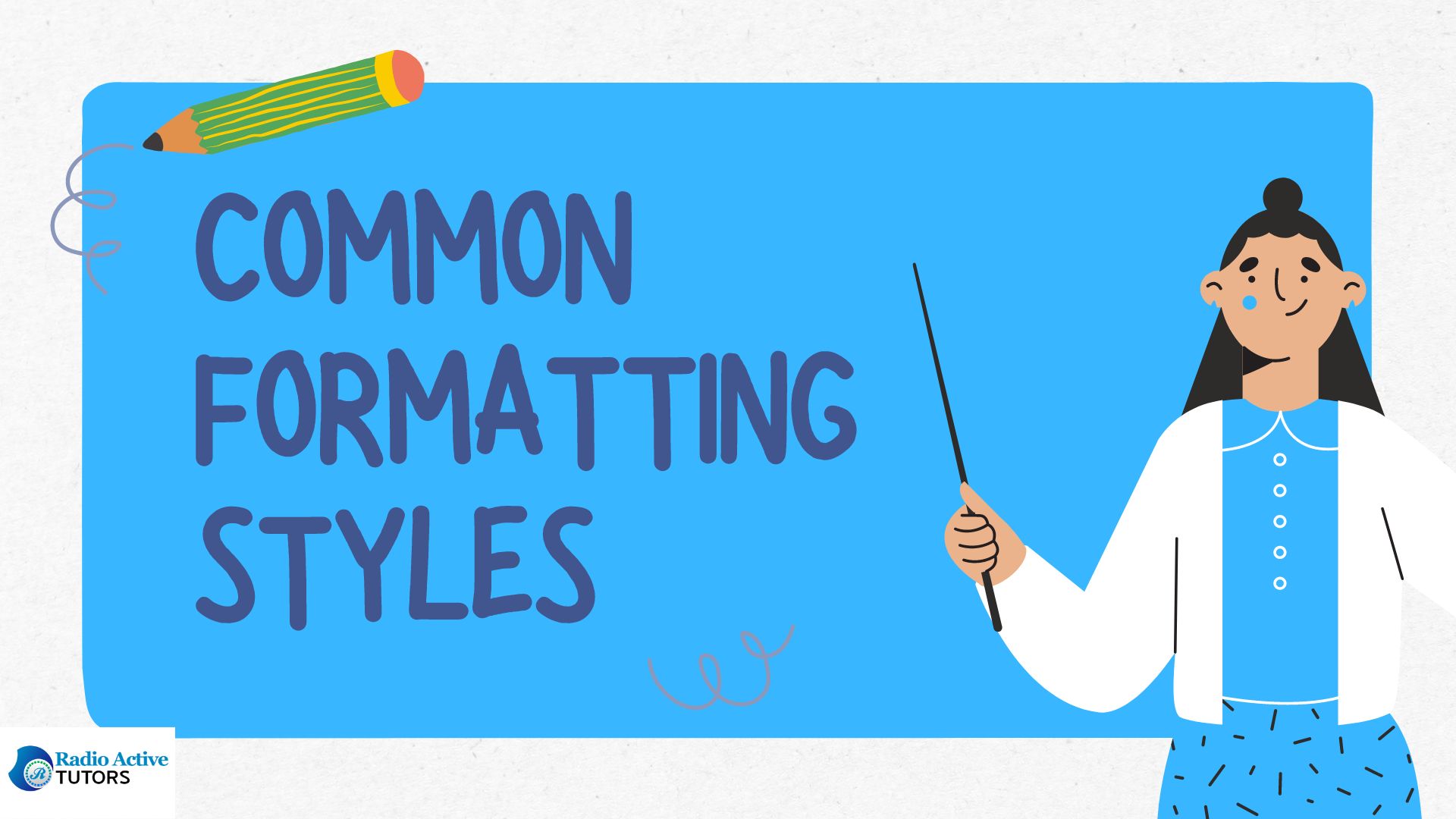1. Formatting Guidelines for a Literature Review
- Title Page and Headings
- Proper formatting for the title page and section headings according to style guides (APA, MLA, Chicago, etc.).
Proper formatting for the title page and section headings is essential for maintaining academic integrity and readability in a dissertation literature review. Each style guide, such as APA, MLA, and Chicago, has specific requirements. For example, the APA style requires a title page with the title, author’s name, institutional affiliation, course name, instructor’s name, and due date, all centered and double-spaced. Section headings in APA are formatted using a specific hierarchy with distinct font styles and indentation. MLA style, on the other hand, does not typically require a separate title page; instead, relevant information is placed on the first page’s upper left corner. Section headings in MLA are less structured but should still be clear and consistent. The Chicago style often includes a title page with the title centered a third of the way down the page and other details at the bottom. Chicago also uses a hierarchical heading system but allows more flexibility. Adhering to these guidelines ensures that the literature review is professionally presented and easy to navigate. Check out the difference between APA 7th edition and MLA 8th Edition here!
- In-Text Citations
- How to correctly format citations within the text.
Correctly formatting citations within the text is crucial for giving proper credit to sources and maintaining academic integrity in a dissertation literature review. Each style guide has its own set of rules for in-text citations. In APA style, citations include the author’s last name and the year of publication, formatted as (Smith, 2020). If directly quoting, a page number is also included, e.g., (Smith, 2020, p. 15). MLA style uses the author’s last name and page number without a comma, such as (Smith 15). In Chicago style, citations can be either in-text or as footnotes; in-text citations typically include the author’s last name, publication year, and page number, e.g., (Smith 2020, 15), while footnotes provide full bibliographic details. Consistently applying these formats throughout the literature review ensures clarity and uniformity, allowing readers to easily locate and verify sources.Learn how to use a citation generator here to aid your dissertation writing.
- Reference List/Bibliography
- Formatting the reference list at the end of the document.
Formatting the reference list at the end of the document is essential for providing complete and accurate source information in a dissertation literature review. Each style guide has specific rules for organizing and presenting this list. In APA style, the reference list is titled “References,” entries are alphabetized by the authors’ last names, and each entry follows a hanging indent format. MLA style titles this section “Works Cited,” also alphabetizes entries, and uses a hanging indent, but the format for each entry differs slightly, focusing more on the medium of publication. Chicago style offers two systems: the Notes and Bibliography system, which lists full bibliographic details for each source in a “Bibliography” section, and the Author-Date system, which uses a “References” section similar to APA. Consistent adherence to these formatting guidelines ensures that the reference list is clear, comprehensive, and professionally presented, enabling readers to easily locate the sources cited in the review.
2. Common Formatting Styles and Their Requirements

- APA (American Psychological Association)
- Key features: running head, abstract, keywords, headings, and references.
In APA (American Psychological Association) format, several key features are essential for properly structuring a dissertation literature review. The running head, a shortened version of the title, appears at the top of each page, flush left, with the page number flush right. The abstract, a concise summary of the paper’s content, follows the title page and includes keywords that highlight the main topics of the review. Headings are organized into a hierarchical structure with different formatting for levels one through five to help organize the content clearly. References are listed at the end of the document in a section titled “References,” with each entry following a specific format that includes the author’s name, publication year, title of the work, and source details, all arranged alphabetically and using a hanging indent. Adhering to these elements ensures clarity, consistency, and professionalism in the presentation of the literature review.
- MLA (Modern Language Association)
- Key features: works cited page, in-text citations, headings, and block quotes.
In MLA (Modern Language Association) format, several key features ensure proper structure and readability in a dissertation literature review. The works cited page, titled “Works Cited,” lists all sources referenced in the paper, arranged alphabetically by the author’s last name and formatted with a hanging indent. In-text citations include the author’s last name and page number without a comma, such as (Smith 123), providing concise source references within the text. Headings in MLA are flexible and should be clear and consistent to guide the reader through the sections of the paper. Block quotes, used for quotations longer than four lines, are formatted by starting on a new line, indented one inch from the left margin, and double-spaced without quotation marks. These features collectively ensure that the literature review is well-organized and easy to follow, adhering to MLA’s standards for academic writing.
- Chicago/Turabian
- Key features: footnotes/endnotes, bibliography, title page, and headings.
In Chicago/Turabian format, key features ensure thorough documentation and clear organization in a dissertation literature review. Footnotes or endnotes are used for citations, providing detailed source information at the bottom of the page (footnotes) or at the end of the document (endnotes). A bibliography lists all sources referenced in the paper, arranged alphabetically by the author’s last name, and provides full publication details. The title page includes the title of the paper, the author’s name, course information, instructor’s name, and the date, all centered and double-spaced. Headings in Chicago/Turabian follow a hierarchical structure, often using headline-style capitalization, and are used to organize the content into clear sections and sub-sections. These features collectively ensure a well-organized and properly cited literature review, adhering to the standards of the Chicago/Turabian style.
3. Tips for Effective Formatting

- Consistency
- Importance of maintaining consistent formatting throughout the review.
Maintaining consistent formatting throughout a dissertation literature review is crucial for several reasons. Consistency ensures that the document is professional and easy to read, allowing the audience to focus on the content rather than being distracted by irregularities in the presentation. Uniform formatting of headings, citations, and references helps in organizing the information logically, making it easier for readers to navigate through the review. It also demonstrates attention to detail and adherence to academic standards, which are critical for establishing credibility and academic integrity. Inconsistent formatting can lead to confusion, misinterpretation of information, and can undermine the overall quality of the literature review. Thus, maintaining consistent formatting is essential for clarity, professionalism, and the effective communication of research findings.
- Using Software Tools
- Benefits of using tools like citation managers (e.g., EndNote, Zotero) and word processing features.
Using tools like citation managers (e.g., EndNote, Zotero) and word processing features offers significant benefits for formatting a dissertation literature review. Citation managers streamline the process of organizing and citing sources, automatically generating citations and reference lists in the required style, thus reducing the risk of errors and ensuring consistency. They also facilitate easy management of large numbers of references, saving time and effort. Word processing features, such as styles and templates, help maintain uniform formatting for headings, subheadings, and text throughout the document. These tools enhance efficiency, accuracy, and the overall quality of the literature review, allowing researchers to focus more on content and analysis rather than on manual formatting tasks.
- Proofreading and Editing
- The necessity of thoroughly reviewing the formatting before submission.
Using tools like citation managers (e.g., EndNote, Zotero) and word processing features offers numerous benefits for formatting a dissertation literature review. Citation managers simplify the process of organizing and citing sources by automatically generating accurate citations and reference lists in the required style, ensuring consistency and reducing the risk of errors. They also allow for easy storage and retrieval of references, saving valuable time. Word processing features, such as styles and templates, help maintain uniform formatting for headings, subheadings, and text throughout the document, enhancing readability and professionalism. These tools improve efficiency, accuracy, and the overall quality of the literature review, enabling researchers to focus more on their analysis and less on formatting tasks.
4. Common Pitfalls and How to Avoid Them
- Inconsistent Citation Styles
- Ensuring all citations follow the same style guide.
Ensuring all citations follow the same style guide is essential to avoid the common pitfall of inconsistent citation styles in a dissertation literature review. Consistency in citation style not only demonstrates attention to detail but also upholds academic integrity and readability. Mixed citation styles can confuse readers, diminish the professional appearance of the document, and lead to misinterpretation of sources. To avoid this, researchers should select a citation style (e.g., APA, MLA, Chicago) at the beginning of their project and use citation management tools like EndNote or Zotero to maintain uniformity. Regularly reviewing citations for adherence to the chosen style guide ensures a polished and credible literature review.
- Formatting Errors in Reference

- Double-checking for errors in the reference list.
Double-checking for errors in the reference list is crucial to avoid common pitfalls in a dissertation literature review. A meticulously formatted reference list ensures that all sources are accurately cited and accessible, maintaining the document’s credibility and academic integrity. Errors such as misspelled author names, incorrect publication dates, or improper formatting can lead to confusion and diminish the quality of the work. To prevent these issues, researchers should thoroughly review each entry for accuracy and consistency with the chosen citation style. Utilizing citation management tools can aid in minimizing errors, but manual verification is essential to catch any discrepancies that automated tools might miss. This attention to detail reflects a commitment to scholarly rigor and enhances the overall professionalism of the literature review.
- Ignoring Style Guide Updates
- Keeping up-to-date with the latest editions of style guides.
Keeping up-to-date with the latest editions of style guides is vital for maintaining accuracy and consistency in a dissertation literature review. Style guides, such as APA, MLA, and Chicago, periodically update their rules to reflect new standards and practices in academic writing. Ignoring these updates can result in outdated or incorrect formatting, which can detract from the review’s professionalism and credibility. Researchers should regularly consult the most recent editions of their chosen style guides to ensure compliance with current guidelines. This practice not only helps avoid formatting errors but also demonstrates a commitment to scholarly excellence and attention to detail, enhancing the overall quality of the literature review. Gain Insights on the main parts of a Dissertatiojn literature review here!
